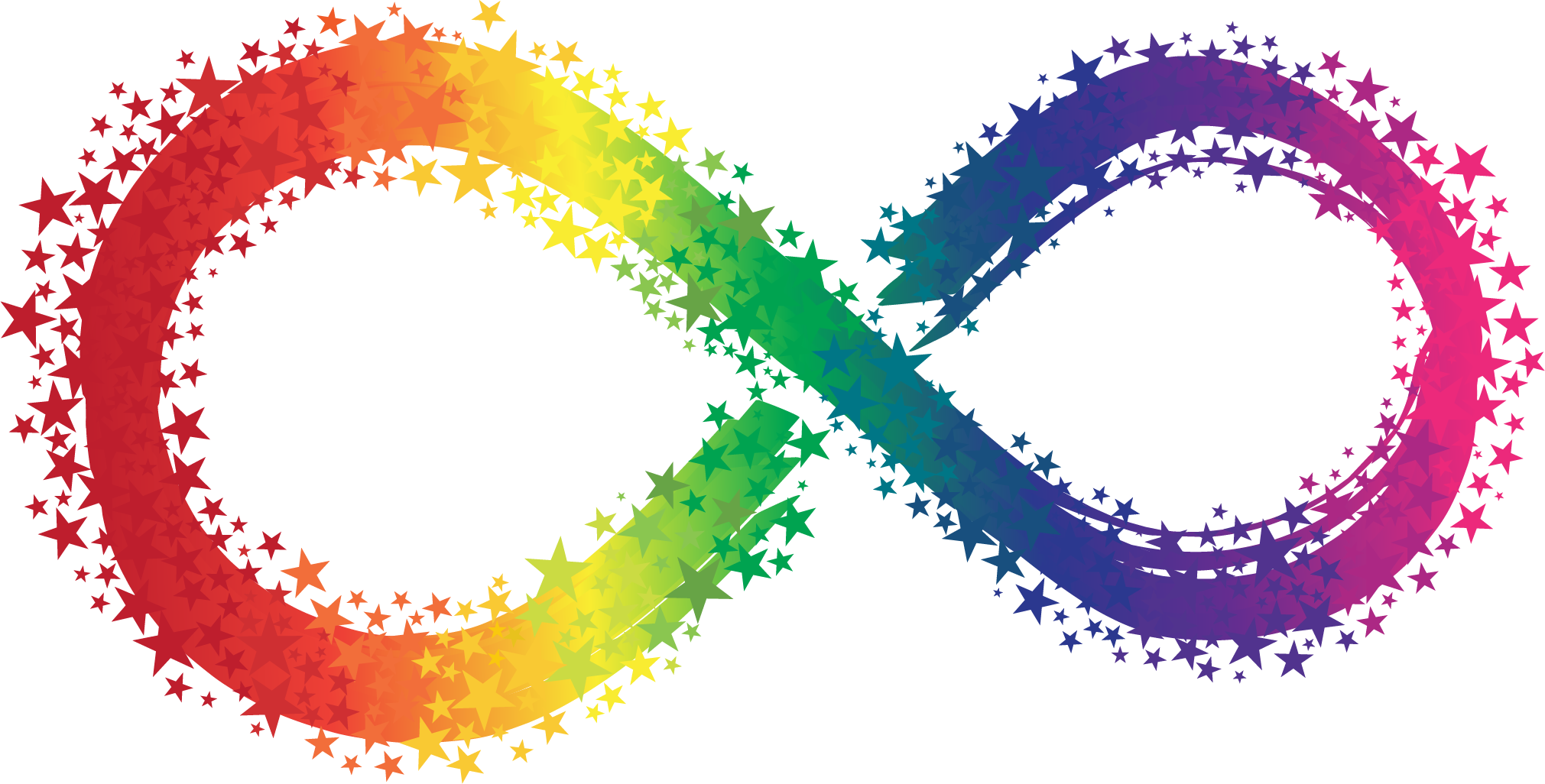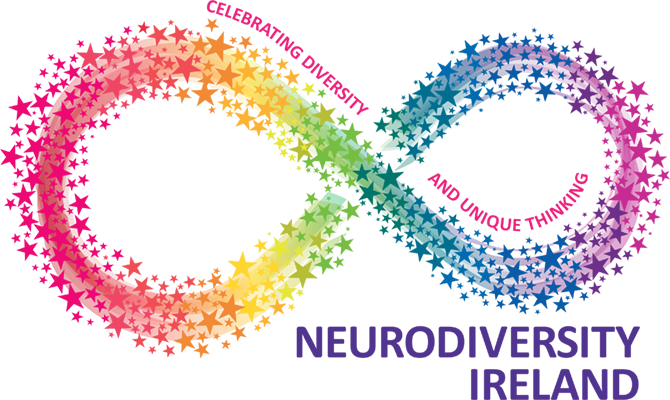What is Neurodiversity
Neurodiversity describes the differences in the way people’s brains work. There’s no ‘correct’ way for the brain to work and instead, there is a wide range of ways that people perceive and respond to the world. These differences are to be embraced and encouraged, they are not deficits!
Some things historically identified as ‘impairments’ or behaviour problems are now more properly recognised as problems with people’s environments — from kids’ birthday parties to school classrooms to adult workplaces — which can be made more comfortable by making some changes. Neurodivergent people are often excluded from things, and wrongly judged by neurotypical people who misunderstand them.
Neurodivergent people experience, interpret and interact with the world in unique ways – this can sometimes create challenges, but it can also lead to creative problem-solving and fresh ideas. In a world that needs more creativity, these perspectives can benefit everyone!

The term ‘neurodiversity’ was coined to help fight the stigma against autistic people, autistic people with ADHD, dyslexia, dyspraxia, etc. It is a movement that supports people who are neurodivergent, focussing on developing their individual strengths and talents. Everyone has a unique brain and therefore different skills, needs and abilities.
FAQ
Some of the most common neurotypes
ADHD
ADHD stands for ‘Attention Deficit Hyperactivity Disorder’. A person with ADHD has differences in brain development and brain activity that affect attention, the ability to sit still, and self-control. ADHD can affect a child at school, at home, and in friendships.
Different parts of our brains are linked via pathways which carry information from one brain region to another. Dopamine helps transmit the information, helping us to both learn and remember. Dopamine is also associated with our motivation to learn and the sense of reward that comes from this. Dopamine does not seem to work as effectively in people with ADHD, making learning more difficult and, at times, even stressful. Exercise and movement are ways that the brain produces more dopamine, which is why children with ADHD are often hyperactive and move a lot.
ADHD can also have an impact on a child’s executive functions; the processes that happen in our brains that help us to plan and organise what we have to do. They help us to control our attention, our impulses and emotions so that we can focus on what we have to do and sustain our focus in order to complete tasks. Our executive functions also help us to retrieve information from our memory, organise this information so we can use it, and continually self-monitor ourselves and manage time effectively. Our executive functions also enable us to make changes or adjustments to what we are doing in real time if the demands of an activity change.
The main types of ADHD are impulsive, hyperactive, inattentive or combined.
ADHD encompasses a range of characteristics, and there are many variables and complexities. Some people like to describe children with ADHD as having a ‘mild’ or ‘moderate’ or ‘severe’ presentation. This is quite unhelpful and doesn’t explain the variety that we can see between different children with ADHD. For example, one child can be very inattentive and not listen to the teacher explaining a task and then cannot start, whereas another child may have listened and understood the task but then find it difficult to plan and organise their work and so not complete the task successfully. Therefore, every child is made up of different abilities, both strengths and challenges. We all have innate abilities and we all find some tasks and activities more difficult than others. Our abilities are the result of a combination of our genes, our experiences in childhood and what we have learned so far in our lives. Hence, every child is different. Our brain is as unique as our fingerprint.
Resources
Autism
Being autistic is a genetically based, for the most part, inherited, neurotype. It is one of a great many neurotypes (including being neurotypical) that have their own profile affecting how people perceive, understand, communicate and experience the world. Autistic people also experience a distinct autistic developmental trajectory and a different, divergent (not disordered) developmental pathway. Individually, autistic people are of course very different to each other, but common ways of experiencing the world that many autistic people share include differences in sensory perception, using sensory information about the environment to understand and learn about the world, a preference for honesty and clarity in communications, a preference for predictability and control, self-expressive body language, a passionate enjoyment of interests and hobbies and a strong ability to hyperfocus at times. Autistic people can also experience emotions intensely. [Credit: The Adult Autism Assessment Handbook, 2023]
Autism in girls
Up to 4 times as many boys are diagnosed autistic as girls. This is not an accurate picture and frequently, for many reasons, girls are diagnosed later, missed or misdiagnosed, causing long term mental health problems with too many girls feeling too anxious to attend school as a result.
Currently the assessment tools used to screen for autism are male-centric.
Resources
- https://autisticgirlsnetwork.org/wp-content/uploads/2022/03/Keeping-it-all-inside.pdf
- https://asiam.ie/
- https://www.adultautism.ie/links
Dyslexia
Dyslexia is a learning difference that can cause difficulties with learning and work. It affects approximately 1 in 10 people and primarily affects reading and writing skills. Dyslexic people may have difficulty processing and remembering information they see and hear, which can affect learning and the acquisition of literacy skills. Signs of dyslexia usually become apparent when a child starts school and begins to focus on learning how to read and write.
A person with dyslexia may:
- Read and write very slowly
- Confuse the order of letters in words
- Be confused by letters that look similar and write letters the wrong way round (such as ‘b’ and ‘d’)
- Have poor or inconsistent spelling
- Understand information when told verbally, but have difficulty with information that’s written down
- Find it hard to carry out a sequence of directions
- Struggle with planning and organisation
But people with dyslexia often have good skills in other areas, such as creative thinking and problem solving.
Resources
Dyspraxia
Dyspraxia (also known as developmental coordination disorder) is a neurodevelopmental difference that affects movement and makes it difficult to perform some motor skills.
Dyspraxia does not affect your intelligence. It can affect your coordination skills such as tasks requiring balance, playing sports or learning to drive a car. Dyspraxia can also affect your fine motor skills, such as writing or using small objects. There are many strengths and qualities associated with this neurotype, such as big picture thinking, problem solving, tenacity, creativity and empathy.
Children may present with difficulties with self-care, writing, typing, riding a bike and playing, as well as other educational and recreational activities. Many of these difficulties will continue into adulthood while people with dyspraxia also struggle with learning some independent living skills, driving a car and managing education and employment. There may be a range of co-occurring difficulties which can also have serious negative impacts on daily life including social emotional difficulties, challenges with planning and organisation, as well as problems with time management, all of which may impact an adult’s education or employment experience.
Resources
Tourettes & Tics
Tourette Syndrome is one of a range of conditions known as Tics. Other conditions include:
- Transient tics or provisional tics – motor tics usually confined to the face and neck although other body parts may be affected; sometimes vocal tics are also present. Transient tics usually last a few weeks or months.
- Chronic tics – tics tend to persist rather than be transitory and can include blinking, sniffing or neck movements. Chronic tics occur for more than one year.
- Tourette Syndrome – multiple motor tics and one or more vocal tics present for at least 12 months, although not always concurrently.
- A tic not specified – tics are present, but do not meet the criteria for any specific tic condition.
The key features of Tourette Syndrome are involuntary sounds and movements, which must be present for at least 12 months to meet the diagnostic criteria. Up to 85% of people with TS will also experience co-occurring conditions and features which might include Attention Deficit Hyperactivity Disorder (ADHD), Obsessive Compulsive Disorder (OCD), and Anxiety.
Resources
FAQ
Frequently Asked Questions
What is Neurodiversity Ireland
We are a community group made up of the neurodivergent parents of neurodivergent children with a vision of Irish communities as leaders in welcoming and celebrating different brains and unique thinkers. Learn more about us here.
What is 'neurodiversity'
Neurodiversity is a concept which encourages the world to view neurodevelopmental differences like autism, ADHD and dyslexia as brain differences, rather than deficits that need to be ‘fixed’.
Neurodivergent people experience and interact with the world in a different way. Embracing these different brains and their qualities and strengths can benefit the entire community.
The world is made up of two types of brains, neurotypical and neurodivergent, creating a neurodiverse environment. Learn more about the types of neurodiversity here.
What support does Neurodiversity Ireland offer
We support the development of neurodiverse-friendly communities across Ireland; Support neurodivergent people & their families, by working within their local communities, schools & sports clubs to implement neurodiverse inclusives policies; Create the Neurodiversity Ireland Sensory centre that will provide the facilities and services greatly needed for speech & language therapy, sensory processing & occupational therapy for neurodivergent children. Learn more about our support activities here.
How can I get the neurodiversity lanyard
Neurodiversity Sandymount will provide children and adults with a Neurodiversity Lanyard in order to empower Neurodivergent people in requesting assistance or support. You can request your Neurodiversity Lanyard today in the contact us box above and we will reach out with next steps. We will supply this lanyard for free to those that meet the application criteria. It is valid for three years for children and five years for adults.
Currently we are only distributing the Sandymount lanyard for use within the Sandymount community as it is a neurodiverse-friendly town.
Why have a Neurodiversity Lanyard?
The lanyard serves as a proof of diagnosis when interacting with service providers in Sandymount. These include public servants and those working in local Sandymount businesses. Any support provided is at the service’s discretion. It does not automatically entitle lanyard wearers and or their companions to preferential treatment over other customers, though Neurodiversity Sandymount is currently in talks with a number of businesses and service providers to provide support and benefits to lanyard wearers.
I want to set up a neurodiverse-friendly town
We have a framework to assist and guide communities through the process of becoming a neurodiverse-friendly town. Learn more about it here.
Included within this framework will be our resource pack (artwork for collateral such as your information booklet, promotional materials, signage, etc.) and a training module for neurodivergent profiles and accommodations needed to improve the experience and inclusive for a truly neurodiverse community.
We can also advise on the structure for your launch event and how to gain business and school support, as well as sharing our best practice on working with local councils and community groups to create neurodivergent-friendly spaces. Your town committee will be responsible for supervising implementation of and commitment to the project in your locality.
How can I help
We are fundraising to create the Neurodiversity Ireland Sensory Therapy Centre – Dublin. This centre would offer the resources and services to support neurodivergent children in sensory processing integration, occupational therapy and speech and language therapy.
You can help us by donating through the following online form to help us build this Sensory Therapy centre to provide critical developmental opportunities which help establish foundations for successful participation in play, school, and home life.
